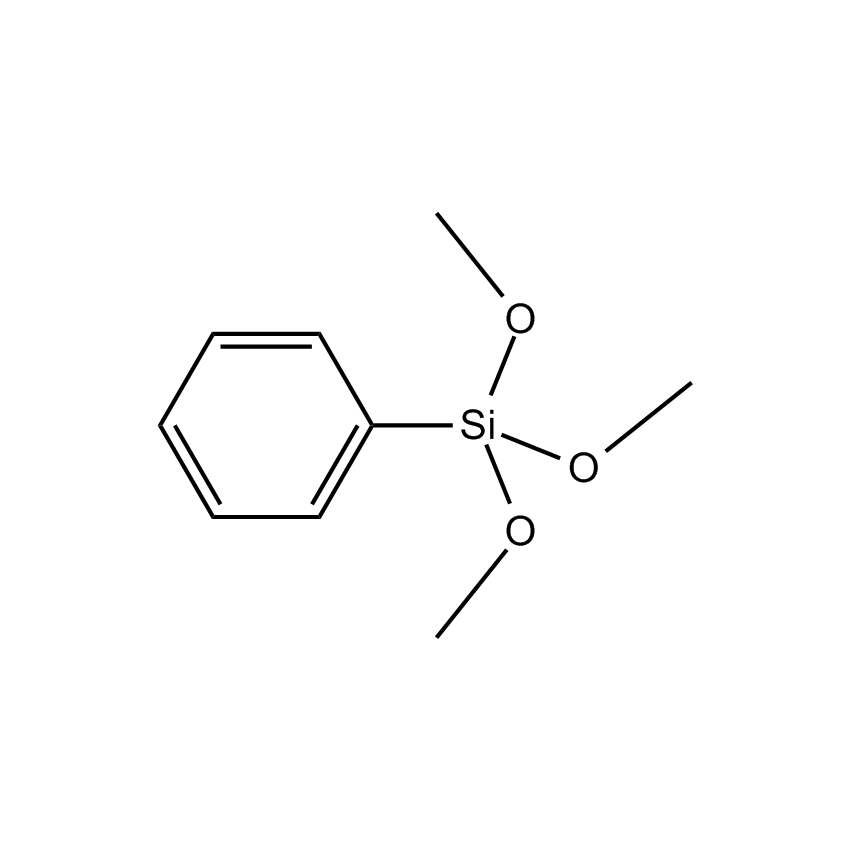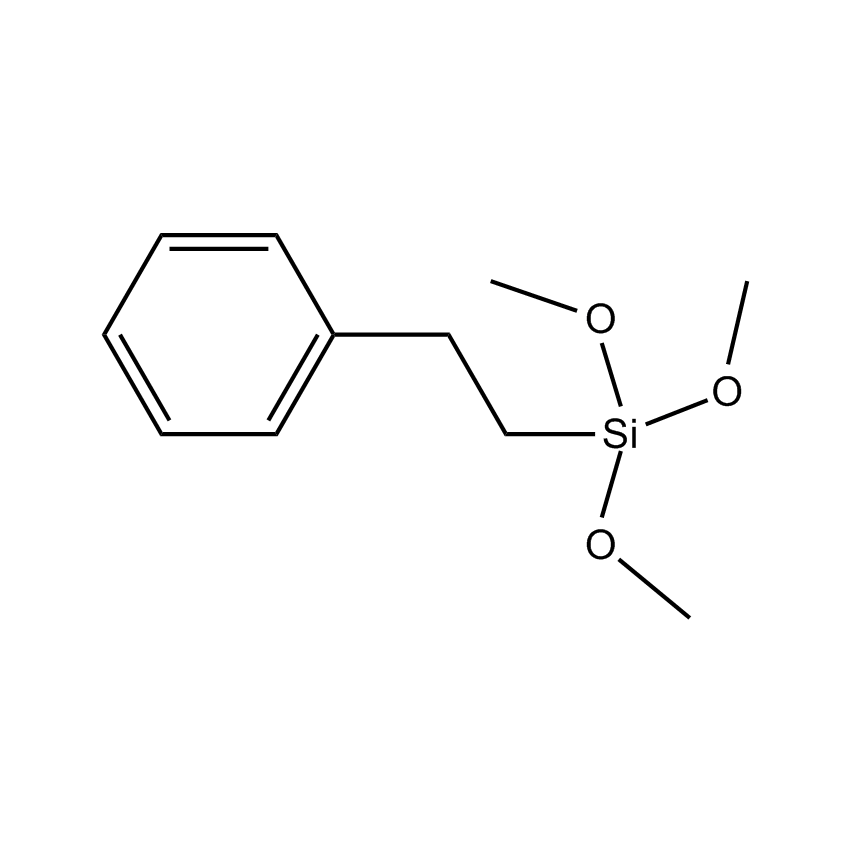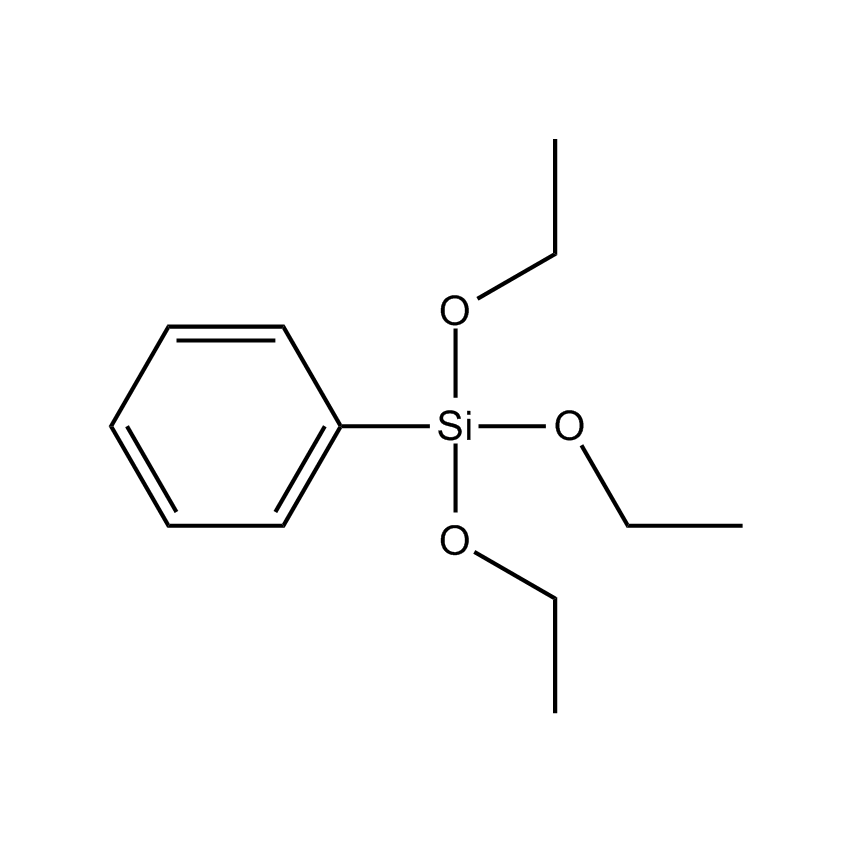Additional Properties
- Einecs Number 221-066-9
- HMIS 3-2-1-X
- Molecular Formula C9H14O3Si
- Molecular Weight (g/mol) 198.29
- Purity (%) 97%
- TSCA Yes
- Boiling Point (˚C/mmHg) 211
- Density (g/mL) 1.064
- Flash Point (˚C) 86 °C
- Melting Point (˚C) -25°
- Refractive Index @ 20˚C 1.4734
- Viscosity at 25 ˚C (cSt) 2.1
Application
Cross couples with aryl halides.1
Extensive review on the use in silicon-based cross-coupling reactions.10
Phenylates heteroaromatic carboxamides.2
Directly couples with 1o alkyl bromides and iodides.3
Converts carboxylic acids to phenyl esters and vinyl carboxylates.4
Converts arylselenyl bromides to arylphenylselenides.5
Reacts with anhydrides to transfer both phenyl and methoxy and thus form the mixed diester.6
Used in the nickel-catalyzed direct phenylation of C-H bonds in heteroaromatic system such as benzoxazoles.7
Immobilization reagent for aligned metallic single wall nanotubes (SWNT).8,9
Reference
1. Mowery, M. E.; DeShong, P. J. Org. Chem. 1999, 64, 1684.
10. Denmark, S. E. et al. Organic Reactions, Vol. 75, Denmark, S. E. ed., John Wiley and Sons, 233, 2011.
2. Lam, P. Y. S. et al. Tetrahedron Lett. 2001. 42, 2427.
3. Young, J.-Y.; Fu, G. C. J. Am. Chem. Soc. 2003, 125, 5616.
4. Luo, F. et al. Synthesis 2010, 2005.
5. Bhadra, S. et al. J. Org. Chem. 2010, 75, 4864.
6. Luo, F. et al. J. Org. Chem. 2010, 75, 5379.
7. Hachilya, H. et al. Angew. Chem., Int. Ed. Engl. 2010, 49, 2202.
8. LeMieux, M. Science 2008, 321, 101.
9. Nish, A. et al. Nature Nanotechnol. 2007, 2, 640.
Safety
Arylsilane Cross-Coupling Agent
The cross-coupling reaction is a highly useful methodology for the formation of carbon-carbon bonds. It involves two reagents, with one typically being a suitable organometallic reagent - the nucleophile - and the other a suitable organic substrate, normally an unsaturated halide, tosylate or similar - the electrophile.
Aromatic Silane - Conventional Surface Bonding
Aliphatic, fluorinated aliphatic or substituted aromatic hydrocarbon substituents are the hydrophobic entities which enable silanes to induce surface hydrophobicity. The organic substitution of the silane must be non-polar. The hydrophobic effect of the organic substitution can be related to the free energy of transfer of hydrocarbon molecules from an aqueous phase to a homogeneous hydrocarbon phase. A successful hydrophobic coating must eliminate or mitigate hydrogen bonding and shield polar surfaces from interaction with water by creating a non-polar interphase. Although silane and silicone derived coatings are in general the most hydrophobic, they maintain a high degree of permeability to water vapor. This allows coatings to breathe and reduce deterioration at the coating interface associated with entrapped water. Since ions are not transported through non-polar silane and silicone coatings, they offer protection to composite structures ranging from pigmented coatings to rebar reinforced concrete. A selection guide for hydrophobic silanes can be found on pages 22-31 of the Hydrophobicity, Hydrophilicity and Silane Surface Modification brochure.
Phenyltrimethoxysilane, Trimethoxysilylbenzene
Silicon Chemistry, Articles
Silicon Chemistry, Applied Technology







